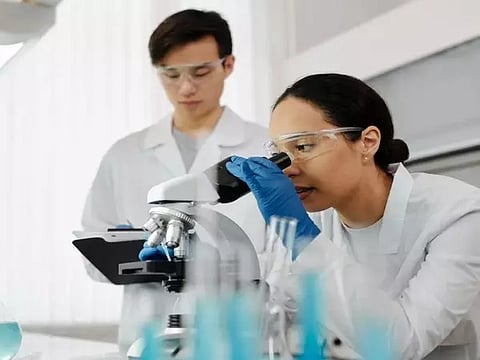

VIRGINIA: Researchers at the University of Virginia School of Medicine have figured out how damaged hearing cells may heal. The attempts to create new and improved strategies for the treatment and prevention of hearing loss may be aided by that crucial discovery.
Our sense of balance and our capacity to hear both depend on "hair cells" in the inner ear. Because the cells are coated with hair-like structures that act as mechanical antennae for sound detection, they are known as hair cells.
As we learn in school, when auditory hair cells are killed, they are permanently lost. However, recent study from UVA Health demonstrates that these sensitive cells have the capacity to recover from harm brought on by stressful situations like loud noises.
"For many years, auditory research has placed considerable emphasis on the regeneration of sensory hair cells. Although these efforts continue, it is equally important to enhance our comprehension of the intrinsic mechanisms that govern the repair and maintenance of these cells. By gaining a deeper understanding of these inherent repair processes, we can uncover strategies to fortify them effectively.
One such approach in the future might involve the utilization of drugs that stimulate repair programs," said researcher Jung-Bum Shin, PhD, of UVA's Department of Neuroscience. "In essence, when replacement of hair cells proves challenging, the focus shifts towards repairing them instead. This dual strategy of regeneration and repair holds strong potential in advancing treatments for hearing loss and associated conditions."
Hearing Repair: Hair cells are naturally fragile - they must be delicate so they can sense sound, but they also must withstand the continuous mechanical stress inherent in their jobs. Prolonged exposure to loud noise harms hair cells in a variety of ways, and one of those is by damaging the cores of the "hairs" themselves. These hair-like structures are known as stereocilia, and Shin's new research shows a process they use to repair themselves.
The hair cells do this by deploying a protein called XIRP2, which has the ability to sense damage to the cores, which are made of a substance called actin. Shin and his team found that XIRP2 first senses damage, then migrates to the damage site and repairs the cores by filling in new actin.
"We are especially excited to have identified a novel mechanism by which XIRP2 can sense damage-associated distortions of the actin backbone," Shin said. "This is of relevance not only for hair cell research, but the broader cell biology discipline."
"Age-related hearing loss affects at least a third of all older adults," Shin said.
"Understanding and harnessing internal mechanisms by which hair cells counteract wear and tear will be crucial in identifying ways to prevent age-related hearing loss. Furthermore, this knowledge holds potential implications for associated conditions such as Alzheimer's disease and other dementia conditions."